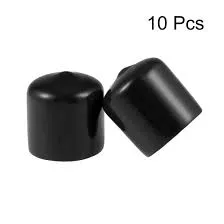Mobile:+86-311-808-126-83
Email:info@ydcastings.com
English
how to cast hollow objects
How to Cast Hollow Objects A Comprehensive Guide
Casting is a versatile method used in manufacturing to create a wide range of objects from various materials. While many are familiar with solid casting techniques, creating hollow objects presents its own unique challenges and methodologies. Whether you are an artist, a sculptor, or an industrial manufacturer, understanding how to cast hollow objects can expand your capabilities. This article will guide you through the essential steps and considerations involved in casting hollow objects.
Choosing the Right Material
The first step in casting hollow objects is selecting the appropriate material. Common materials for casting include metals (like aluminum and bronze), resins, and ceramics. The choice will depend on the intended use of the object, as different materials have varying properties, such as weight, durability, and heat resistance. For example, if you are creating decorative items, resin might be an excellent choice due to its ease of manipulation and vibrant finish. For industrial applications, metals would be more suitable due to their strength and durability.
Designing the Object
Once you have chosen a material, the next step is the design phase. It's imperative to create a detailed design that considers the hollow nature of the object. This includes designing an appropriate mold that will accommodate the hollow space. There are various methods to create a mold, including
1. Two-part molds These molds consist of two halves that fit together. They are particularly useful for more complex shapes. 2. Lost-wax casting This method involves creating a wax model of the object, encasing it in a mold, and then melting away the wax, leaving a hollow space for the molten material. 3. Core-making For certain designs, a core can be made separately and inserted into the mold to shape the hollow cavity.
Preparing the Mold
After designing the mold, the next step is to prepare it. This involves ensuring that the mold is clean, free of defects, and ready for use. For metal casting, molds may be made from sand, plaster, or metal, depending on the material being used. If you are using a two-part mold, applying a release agent is crucial to ensure that the object can be removed easily once it has set. This step prevents the cast object from sticking to the mold, which could lead to breakage or disfigurement.
how to cast hollow objects

Pouring the Material
Once the mold is ready, the next step is to pour the material. If you are working with metals, ensure that the metal is heated to its appropriate melting point. For resins, it’s important to mix the components thoroughly before pouring. When casting hollow objects, it’s essential to pour the material in a manner that minimizes air pockets, which could compromise the integrity of the structure. Techniques such as tapping the mold gently after pouring can help release trapped air bubbles.
Cooling and Finishing
After pouring the material, allow it to cool and harden completely. The cooling time will depend on the material used and the thickness of the object. Once the object has cooled, it is time to demold. Carefully open the mold and remove the cast object. At this stage, you might need to perform additional finishing processes, such as sanding, polishing, or painting, to achieve the desired aesthetic appeal.
Testing and Quality Control
Finally, it’s essential to test the finished hollow object for quality and structural integrity. This may involve visual inspection, weight tests, or performance tests depending on the intended use of the object. Ensuring that your hollow casting can withstand the required conditions is crucial, particularly in industrial applications where safety and functionality are non-negotiable.
Conclusion
Casting hollow objects requires careful planning, technical skill, and a good understanding of materials and processes. By following these steps, you can successfully create high-quality hollow objects that meet your specific needs, whether for art or industry. With practice, you can refine your techniques and experiment with designs, further enhancing your creative and manufacturing capabilities. Happy casting!
-
Materials Used in Manufacturing Cap End Pipe FittingsNewsNov.24,2025
-
Material Properties of CF8M CastingNewsNov.24,2025
-
How to Inspect Pump Cap Ends for DamageNewsNov.21,2025
-
Backward Curved Impeller – Efficient Airflow Solutions for Industry | YD CastingsNewsNov.21,2025
-
Automobile Water Pump - Efficient, Quiet, Durable & ElectricNewsNov.21,2025
-
Impeller for Pumps – High-Efficiency, Durable, OEM-ReadyNewsNov.21,2025











